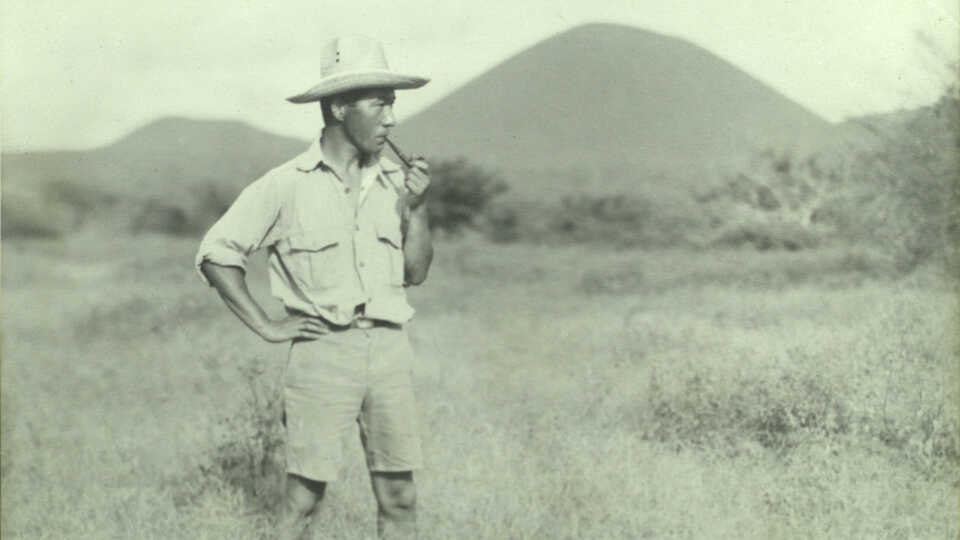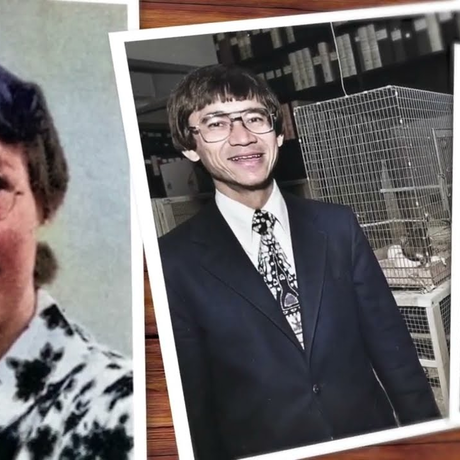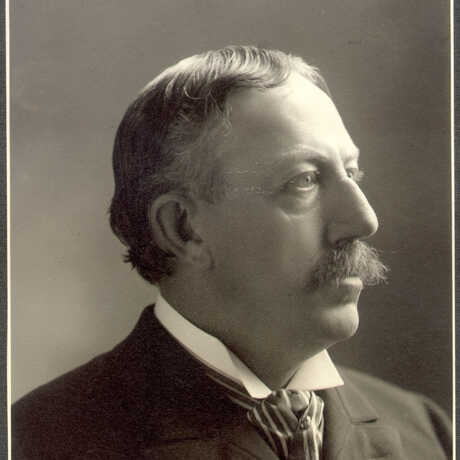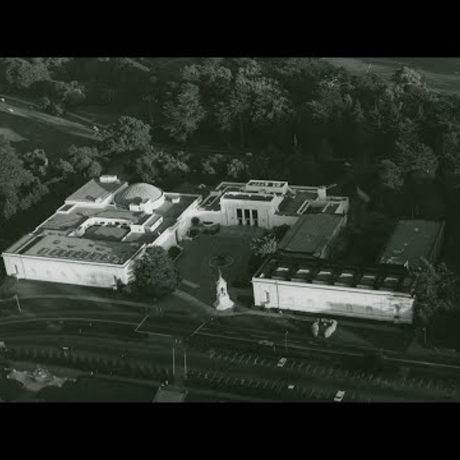Founded in 1853, the Academy Library is a research library devoted to natural history and the natural sciences. Explore our extensive collections, including rare books, serials, maps, and photography.
Untold Stories
Toshio Asaeda

Introduction and early life
Toshio Asaeda was born on December 9, 1893. Not a lot is known about his family—even the names of his parents remain elusive. Newspaper records at the time of his birth report Asaeda's family as registered to a town in the east of Yamaguchi province, the southernmost prefecture on Japan's main island. Yet Asaeda is listed as having been born in Tokyo, and his CV and immigration records cite the capital city as his place of birth. Such dearth of concrete information and uncertainty of basic facts is a bit of a running theme when researching his life. He was seemingly private and focused on his work more than anything else.
Toshio Asaeda's mother passed away when he was a child, and he subsequently left his father and siblings to live with uncles for about 6 months. He moved back to Tokyo around 1910 after the death of his father, and continued his education there.
Education and travel (Japan)
Education:
Gunma Prefectural Tomioka Middle School.
Azabu Junior High School, Tokyo [graduated in 1911 at age 18].
Taught at Nakasato Senior High School, Gunma Prefecture [1912-1914].
From 1914 to 1916, Asaeda took time off to travel and learn. He met Yamanouchi Shigeo during this time while gathering rocks, shells, seaweed.
Enrolled in the Science Department, Tokyo Higher Normal School [1916]. Yamanouchi taught there, and Asaeda studied minerals & geology under Denzo Sato.
Taught geography at his alma mater Azabu Junior High School, Tokyo [1920-1922].
In June of 1923, Asaeda published a book about mountain climbing as a hobby, and he had hoped to rely on royalties from the book going forward. However, due to the destruction of the 1923 Tokyo Earthquake on September 1st, the publisher went bankrupt and Asaeda made the decision to leave for the United States.
Work and travel (internationally)
By 1924, Toshio Asaeda was living in New York City, learning English at the YMCA and working at a coffee shop. He soon got a new job working at the studio of James L. Clark, a hunter, artist, and taxidermist who was in charge of the exhibit and diorama preparation at the American Museum of Natural History. Asaeda credits his time spent there (about 2 years between 1924 to 1926) as teaching him his skills in taxidermy.
From 1926 until about 1929, much of Asaeda’s time was spent working between Los Angeles and San Francisco. While in the Bay Area, his skill at specimen painting brought him into contact with two men who would be directly tied to the Academy: President of Stanford David Starr Jordan and biologist Barton Warren Evermann, both of whom worked primarily with fish and both of whom commissioned Asaeda for scientific paintings. Both men would end up in prominent positions at the Academy of Sciences.
Those years (from the mid-1920s to 1930) were marked by lots of movement, as Asaeda traveled between New York City and California working short-term jobs. By the time of the stock market crash of 1929, Asaeda had been awarded first prize in The Nature Study Classification, a Kodak-sponsored photography competition reported on in the New York Times. By 1930, he was back in San Francisco working in a color photography print studio. The economic instability and his own natural adventurous streak led Asaeda, through his connection with Barton W. Evermann, to search for different kinds of work. He would find it with author Zane Grey, who had a ship and was planning to host an expedition.
At the end of 1930 until August of 1931, the crew traveled throughout the South Pacific visiting several of its island nations. Asaeda painted watercolors and, on Dr. Evermann's request, collected fish specimens for the Academy. When Zane Grey's expedition ended, he was back in San Francisco. Dr. Evermann, impressed by Asaeda's skill, found him work making illustrations for the Steinhart Aquarium at the Academy. It was not long before another opportunity arose with one Charles Templeton Crocker. The self-styled explorer and grandson of railroad tycoon Charles Crocker, C.T. Crocker employed Asaeda on a 1932 expedition to the Galapagos Islands. Asaeda was possibly the first Japanese person to be part of such an expedition to those islands.
For the rest of the 1930s, Asaeda was on expedition after expedition, most with C.T. Crocker on his yacht the Zaca. Throughout the decade, he traveled throughout Eastern Polynesia and Hawai'i, Central and South America, all the while making photographic prints and watercolors of collected animals. In between expeditions, in 1936, Asaeda also got married to Suzuka Tanizaki.
World War II and internment at Topaz
In 1940, Toshio Asaeda opened a color photography studio in San Francisco. However, World War II was surging abroad and especially after the bombing of Pearl Harbor in 1941, the environment became increasingly hostile for people of Japanese descent in the States. A member of the St. Francis Yacht Club even called the Department of Justice about Toshio Asaeda late that year, telling them of Asaeda's participation in the scientific expeditions and claiming (without evidence) that he had been sending papers and reports of those trips back to Japan. Within two months, the Department of Justice had issued a search warrant for Asaeda's home, where he voluntarily accompanied them to the San Francisco Field Office. Executive Order 9066—which created “military zones” where concentration camps would intern Americans of mostly Japanese and Asian descent—had been signed by President Franklin D. Roosevelt at that point. Despite insisting at every point that his only allegiance was to the USA, providing a list of references which included C.T. Crocker, Barton Evermann, and two Steinhart Aquarium superintendents, and the case even being closed due to no evidence of subversive activity, Asaeda and his wife were evacuated from San Francisco.
In June of 1942 Asaeda and Suzuka were made to move to the Tanforan Assembly Center in San Bruno, CA for staging, then in October of that year moved to the Topaz Internment Camp in Utah. Most of the people interned there were coming from the San Francisco Bay Area, also by way of Tanforan. While forced to be at Topaz camp, Asaeda allowed his knowledge and past experiences to be a resource to other people interned at the camp, teaching art and science lessons throughout his stay. He also spent some of his free time creating watercolors of the camp itself. Some can be seen in the Springville Museum of Art in Utah, and 39 of his paintings are kept at the National Museum of Ethnology in Osaka, Japan.
Post-war and time at the Academy
Toshio Asaeda and his wife were at Topaz until October of 1945. His San Francisco photo studio was long lost to him by that point, and his search for work led him to be a research assistant at the California Institute of Technology in Pasadena, CA. He also worked for paleontologist Wyatt Durham through 1947, where he made casts and photographs. Things were limited for Asaeda, though; he wasn't a full U.S. citizen, and so certain museum and academic jobs were unavailable to him.
Both Asaeda and his wife missed San Francisco and the social life they had there, and so his job search remained primarily aimed there. With his good connections to the Academy of Sciences and his history of temporary and commissioned work there, Asaeda was able to become Assistant Curator of exhibits in Spring of 1949.
In 1952 the Immigration and Nationality Act was passed, which ended the types of racial restrictions to immigration and naturalization which kept Asaeda from becoming a full citizen. Just three years after, and at 62 years of age, Toshio Asaeda was an American citizen.
From 1949 until his retirement in 1965, Asaeda was remarkably prolific and versatile in the kinds of projects he undertook. Throughout the 1950s he did taxidermy on rhinos, hippos, and other mammals which ended up in the African Hall. He did the same with fish and birds for various displays. In 1956 he painted a Martian landscape for the Planetarium, which was only four years old at that time. He created decorative floral illustrations for a book about famed Academy botanist Alice Eastwood. All the while, Asaeda managed the exhibits and took photographs for the Academy's uses.
Post-Academy life and legacy
At the age of 72, Toshio Asaeda retired from the California Academy of Sciences. He left to work on his garden and to visit Japan with his wife. Just two years after, however, and before he could visit the country of his birth, Asaeda passed away on March 18, 1968.
The legacy and depth of involvement that Toshio Asaeda left behind at the Academy of Sciences is still being discovered. The vivid and colorful watercolors of fish from the earliest days of his Pacific expeditions remain all over the Academy, used as promotional as well as scientific resources. Animals which were preserved by Asaeda can still be found in the halls and collection shelves. Much of what we see and interact with at the Academy bears the quiet influence of the man known mostly as just Toshio, and his wide range of expertise may finally get the celebration and full recognition that it deserves.
References
Kim, Rebekah, and Norio Niwa. “Toshio Asaeda.” Ichthyology & Herpetology 109, No. 3. 8 Oct. 2021, pgs. 912-913
Niwa, Norio. “A Short Biography of Toshio Asaeda.” Oct. 2021. Manuscript for the National Museum of Ethnology in Osaka, Japan.
Takahashi, Tomoye. “Personality Sketch: Toshio Asaeda.” Topaz Times, 5 Aug. 1943, pg. 2
Online Images
Toshio Asaeda watercolor drawings (MSS-016): https://calacademy.omeka.net/items/browse?collection=2
"The Scientific Expedition to the South Pacific in the Yacht Zaca" film, 1934-1935, Templeton Crocker Pacific Expedition (American Museum of Natural History): https://digitalcollections.amnh.org/AssetLink/614b8sc2a26m2nr8yy3d5hsw7fony7c4.mp4
Academy Library and Archives
California Academy of Sciences
55 Music Concourse Drive
San Francisco, CA 94118


